If you’re facing the dreaded “Apache Shutdown Unexpectedly” error in XAMPP, don’t panic! It’s a common issue, and fixing it is easier than you think. Just check your configuration files, ensure no other applications are using port 80, and restart. You’ll be back up and running in no time!
How to Fix XAMPP Error “Apache Shutdown Unexpectedly”
Are you staring at your screen, frustrated by the dreaded ”Apache Shutdown Unexpectedly” error in XAMPP? You’re not alone! This pesky issue has tripped up countless developers, both newbies and seasoned pros alike. Whether you’re trying to run a local server for testing, developing a website, or just dabbling in PHP, this error can feel like a major roadblock. But don’t worry! In this article, we’ll walk you through the most common causes of this problem and provide you with simple, step-by-step solutions to get your Apache server up and running smoothly again. By the end, you’ll be back on track, and maybe even a little wiser about how to keep those pesky errors at bay. So, let’s dive in and tackle this challenge together!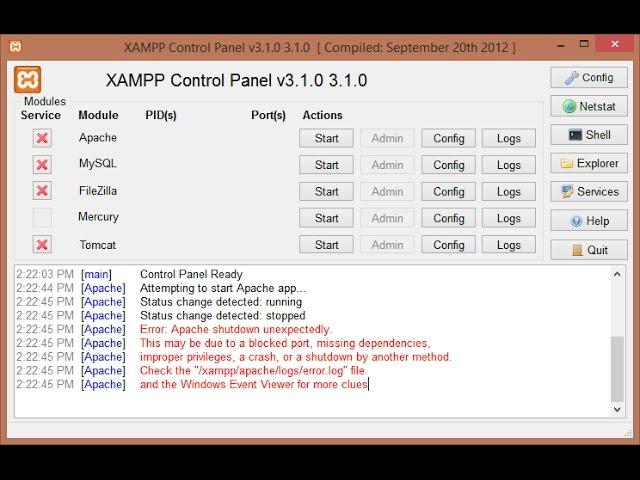
Understanding the Apache Shutdown Unexpectedly Error in XAMPP
Encountering the Apache Shutdown Unexpectedly error in XAMPP can be frustrating, especially if you’re in the middle of an important project. This issue often stems from misconfigurations, port conflicts, or even missing files. Understanding the root causes can help you resolve the problem efficiently.
Some common reasons for this error include:
- Port Conflicts: Apache typically runs on port 80 (or 443 for HTTPS). If another application, such as Skype or IIS, is using these ports, Apache will fail to start.
- Configuration Errors: Errors in the
httpd.confor httpd-vhosts.conffiles can prevent Apache from starting correctly. - Missing Dependencies: Ensure that all necessary files and dependencies are present. A missing DLL can lead to unexpected shutdowns.
- Insufficient Permissions: Sometimes, running XAMPP with insufficient user privileges can hinder Apache from functioning properly.
To troubleshoot effectively, consider checking the Apache error logs. These logs can be found in the xampp/apache/logs/error.log directory. Analyzing this log file can give you insights into what went wrong during the startup process.
If you’re dealing with a port conflict, here’s a quick way to change the port for Apache:
| Step | Action |
|---|---|
| 1 | Open the httpd.conf file located in xampp/apache/conf/. |
| 2 | Search for the line Listen 80 and change it to Listen 8080. |
| 3 | Update the ServerName directive to match the new port: ServerName localhost:8080. |
| 4 | Save the changes and restart Apache. |
After making these adjustments, restart XAMPP and see if the issue persists. If it does, try running XAMPP with administrator privileges. Right-click the XAMPP Control Panel and select “Run as administrator.” This can often resolve permission issues that might be causing the shutdown.
if all else fails, consider reinstalling XAMPP. While this is a last resort, sometimes a fresh installation can clear up lingering issues that are hard to diagnose. Be sure to back up any important files before proceeding with a reinstallation.
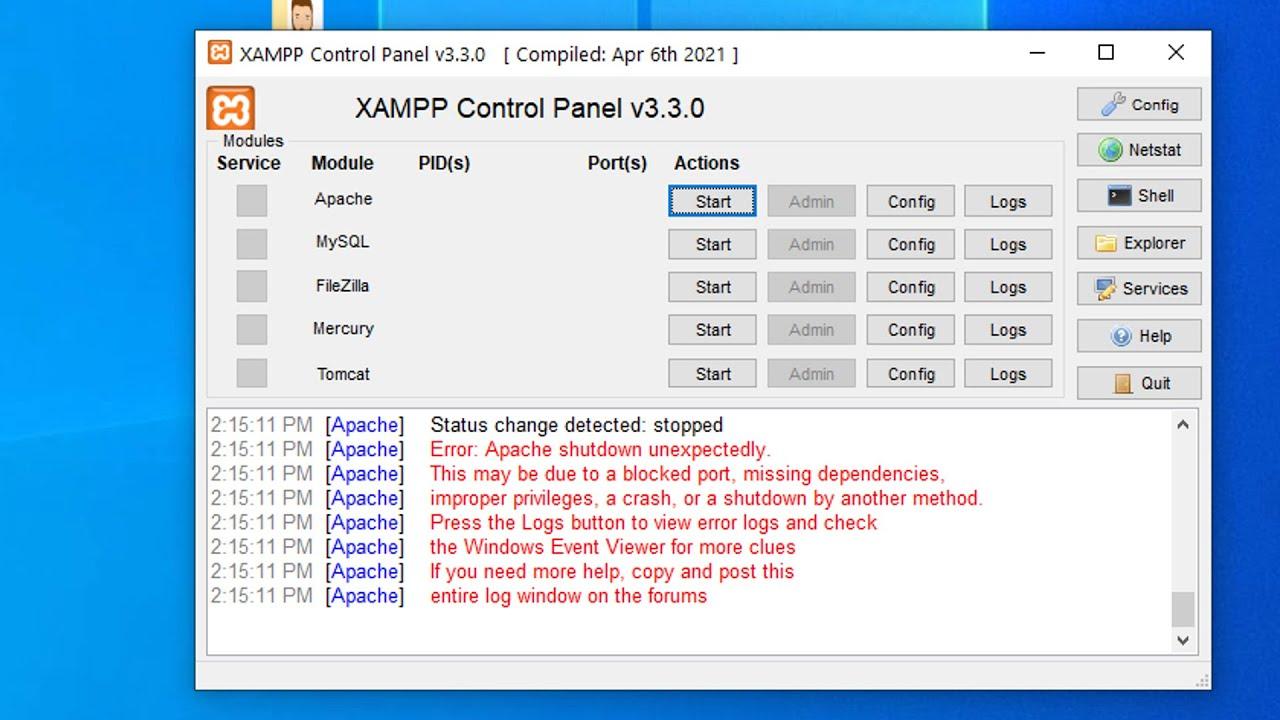
Common Causes Behind the Apache Shutdown Error
Encountering an unexpected shutdown of Apache in XAMPP can be frustrating. Several factors contribute to this issue, and understanding them can help you troubleshoot effectively. Here are some of the most common causes behind this error:
- Port Conflicts: Apache typically operates on port 80 or 443. If another application, such as Skype or another web server, is already using these ports, Apache will fail to start.
- Configuration Errors: Mistakes in the Apache configuration files (like
httpd.conforhttpd-vhosts.conf) can lead to errors. Even a missing character or incorrect syntax can prevent Apache from launching. - Firewall or Antivirus Interference: Sometimes, a firewall or antivirus program may block Apache’s operation. This can trigger the shutdown unexpectedly, as the security settings may not allow Apache to communicate properly.
- PHP Errors: If you’re using PHP with Apache, any errors in your PHP files can lead to a crash. Ensure that your scripts are error-free and compatible with the version of PHP you’re using.
- Insufficient System Resources: Apache requires a certain amount of system resources to run smoothly. If your machine is overloaded or has insufficient memory, Apache may shut down unexpectedly.
To address these issues, consider checking the following:
| Cause | Solution |
|---|---|
| Port Conflicts | Change Apache’s listening port in the httpd.conf file. |
| Configuration Errors | Review and validate your configuration files for syntax errors. |
| Firewall/Antivirus | Add Apache to the allowed list in your firewall or antivirus settings. |
| PHP Errors | Debug your PHP scripts and check the error logs for issues. |
| Insufficient Resources | Close unnecessary applications to free up resources. |
By identifying these common causes, you can take proactive measures to fix the Apache shutdown issue effectively. Addressing these potential roadblocks not only helps to resolve the immediate problem but also enhances the overall stability of your XAMPP environment.
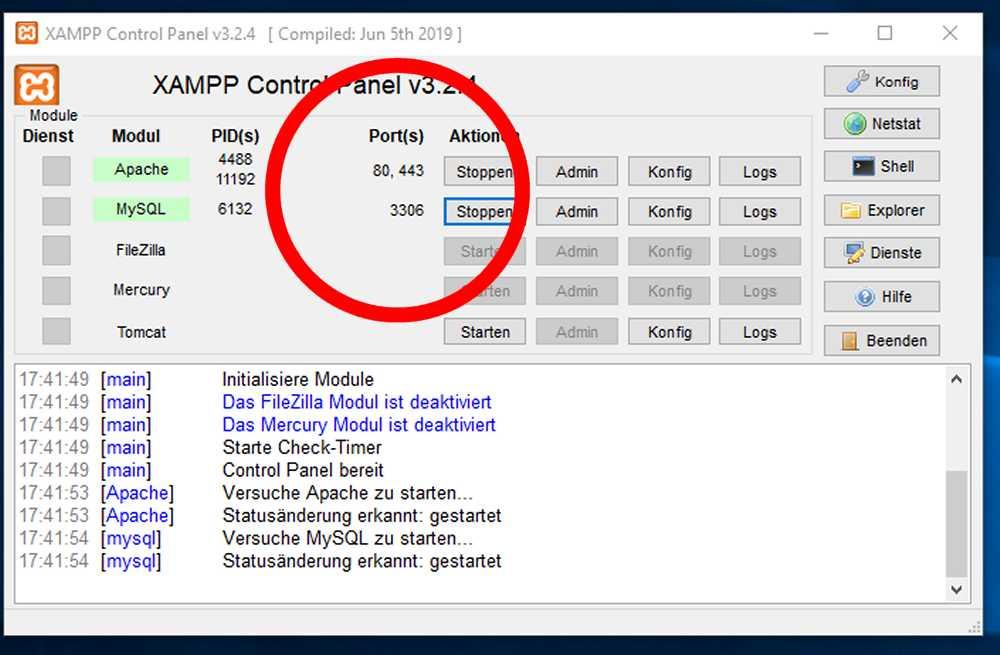
Step-by-Step Guide to Diagnose the Issue
To effectively diagnose the “Apache Shutdown Unexpectedly” error in XAMPP, follow these systematic steps. Each step aims to uncover potential issues that could be causing the problem, ensuring that you can get your Apache server running smoothly again.
Check the Apache Error Log:
The first step in diagnosing the issue is to examine the Apache error log. This log can provide specific error messages that can help pinpoint the problem.
- Navigate to the
xampp/apache/logs/error.logfile. - Open the file using a text editor.
- Look for any recent error messages that may indicate the cause of the shutdown.
Port Conflicts:
Another common reason for Apache’s abrupt shutdown is conflicts with existing applications using the same ports. Typically, Apache uses port 80 or 443. To check for conflicts:
- Open your command prompt (Windows) or terminal (Mac/Linux).
- Type
netstat -ano | findstr :80and hit Enter. - If another application is using port 80, consider terminating that process or changing Apache’s listening port in the
httpd.conffile.
Memory Issues:
Insufficient memory can cause Apache to shut down unexpectedly. Here’s what you can do:
- Check your system’s available memory.
- Close any unnecessary applications that might be consuming resources.
- Consider increasing the memory limit in the
php.inifile if you’re running PHP scripts.
Configuration Errors:
Occasionally, configuration errors in the Apache configuration files can lead to shutdowns. To troubleshoot this:
- Review the
httpd.confand httpd-vhosts.conffor any syntax errors. - Use the command
apachectl configtestto check for configuration syntax issues.
Firewall or Antivirus Interference:
Sometimes, your firewall or antivirus software might block Apache from starting. To rule this out:
- Temporarily disable your firewall and antivirus software.
- Try starting Apache again.
- If it works, create an exception for Apache in your security software settings.
By following these steps, you can systematically identify and resolve the cause of the “Apache Shutdown Unexpectedly” error in XAMPP. Each step is designed to help you eliminate potential issues, facilitating a smoother troubleshooting process.
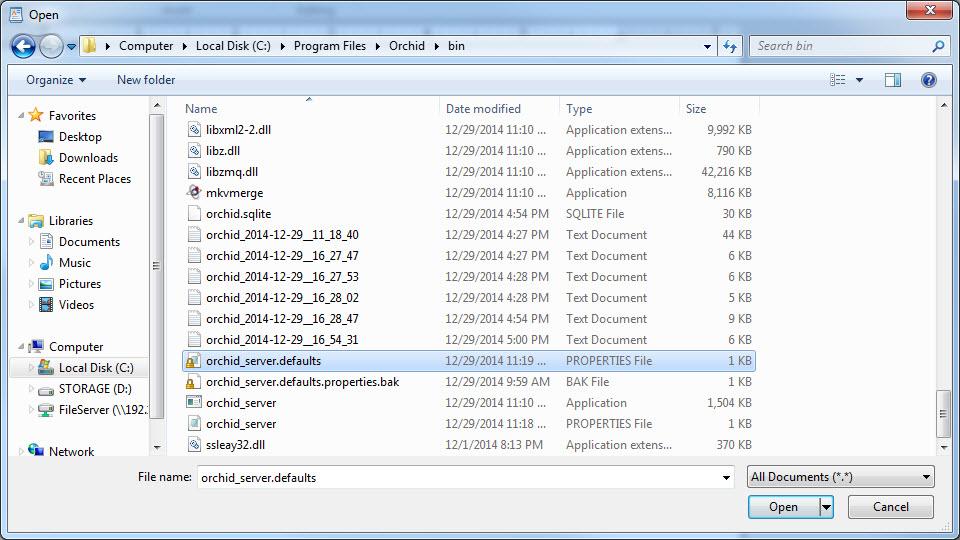
Tweaking the Configuration Files for Success
If you’ve been wrestling with the “Apache Shutdown Unexpectedly” error in XAMPP, tweaking your configuration files can be a game-changer. These files are the backbone of your server’s operation, and a few adjustments can resolve many issues, including the one you’re currently facing.
First things first, locate your httpd.conf file, which is typically found in the apacheconf directory of your XAMPP installation. Open this file with a text editor and check for common misconfigurations. Here are a few things to look out for:
- Listen Directive: Ensure that the Listen directive is set to the correct port. The default is usually 80, but if you have other services running on that port, you may need to change it to 8080 or another unused port.
- ServerName: Make sure the ServerName directive is uncommented and correctly specifies your localhost and port (e.g., ServerName localhost:80).
- DocumentRoot: Confirm that the DocumentRoot points to the directory where your project files are stored. An incorrect path can also lead to startup issues.
Next, it’s essential to review your php.ini file, located in the php directory. This file manages PHP settings, and certain configurations can interfere with Apache’s performance. Pay attention to:
- Memory Limit: Check the memory_limit setting. If it’s set too low, increase it to ensure that PHP can handle your applications’ needs.
- Error Log: Verify that the error_log directive has a valid path. If this path is incorrect, Apache might shut down unexpectedly when it tries to log errors.
- Extensions: Make sure that any essential extensions (like mysqli or curl) are not commented out. Without these, your applications may fail to run properly.
After making your changes, don’t forget to restart the Apache server through the XAMPP control panel. This step is crucial as it allows all modifications to take effect. If the error persists, you might want to check the error logs generated by Apache. These logs can provide insightful details about what went wrong during startup.
if you’re still encountering problems, consider resetting your XAMPP configuration to default settings and re-applying your changes carefully. Sometimes, starting fresh can clear out hidden issues that are difficult to identify.
Checking Port Conflicts: A Crucial Step
When you encounter the “Apache Shutdown Unexpectedly” error in XAMPP, one of the first things to check is whether there are any port conflicts. Apache is a web server that requires specific ports to be available, primarily port 80 for HTTP traffic and port 443 for HTTPS. If another application is already using these ports, Apache won’t be able to start and will shut down unexpectedly.
To identify if a port conflict exists, you can follow these straightforward steps:
- Open Command Prompt: For Windows users, press
Win + R, typecmd, and hitEnter. - Check Active Connections: Type
netstat -anoand pressEnter. This command will list all active connections and the ports currently in use. - Look for Port 80 and 443: Scan through the list for any entries that show 0.0.0.0:80 or 0.0.0.0:443. Note the PID (Process ID) associated with any entries using these ports.
Once you’ve identified a potential conflict, you can determine which application is using the port. You can do this by opening the Task Manager (Ctrl + Shift + Esc), navigating to the “Details” tab, and matching the PID you noted earlier. If you find that a program like Skype, IIS, or another web server is using the port, you have a couple of options:
- Change the Application’s Port: If the conflicting application allows you to change its port settings, this can be an effective solution.
- Stop the Conflicting Application: If the other application isn’t necessary for your current work, you can simply stop it. Right-click on the application in Task Manager and select ”End Task.”
If you prefer to take a different route, you can also change the default ports for Apache in the XAMPP configuration file. Here’s how:
- Open the httpd.conf file located in the
C:xamppapacheconfdirectory. - Search for the line that says
Listen 80 and change it to Listen 8080(or any other unused port). - Also, find the line that says
ServerName localhost:80 and update it toServerName localhost:8080. - Save the file and restart Apache through the XAMPP control panel.
By ensuring that your ports are free, you’re paving the way for Apache to start smoothly. This simple check can save you a lot of time and frustration, so make it a part of your troubleshooting process whenever you face related issues.
Verifying Your PHP Settings and Extensions
When troubleshooting the “Apache Shutdown Unexpectedly” error, one of the first steps you should take is to verify your PHP settings and extensions. This process can reveal potential misconfigurations or missing components that are essential for Apache to run smoothly.
Begin by opening your php.ini file, which you can typically find in the XAMPP/php directory. You can open this file using any text editor. Look for the following key settings:
- memorylimit: Ensure that this value is set to a reasonable limit, such as
128Mor256M. - maxexecutiontime: This setting, which controls the maximum time a script can run, should ideally be set to >
30seconds. - displayerrors: Setting this to
Oncan help you see immediate errors for debugging.
Next, check the extensions that are enabled in your PHP configuration. Some commonly required extensions for Apache functionality include:
- phpmbstring.dll
- phpmysqli.dll
- php_xmlrpc.dll
To verify which extensions are enabled, you can create a simple PHP script. Just create a file named info.php in your XAMPP/htdocs directory and add the following code:
Now, navigate to http://localhost/info.php in your web browser. This will display a detailed PHP configuration page. Pay attention to the Loaded Extensions section to confirm that all necessary extensions are enabled.
If you notice any required extensions are missing, simply uncomment the corresponding line in your php.ini file by removing the semicolon (;) at the beginning of the line. After making any changes, be sure to restart Apache through the XAMPP control panel to apply the updates.
Lastly, if you’re still facing issues after verifying settings and extensions, check the Apache error logs located in XAMPP/apache/logs/error.log. This log file can provide critical insights into what might be causing the shutdown, helping you pinpoint further adjustments needed for your PHP configuration.
Reinstalling XAMPP: When It’s Time for a Fresh Start
When you encounter persistent issues with XAMPP, especially the infamous “Apache Shutdown Unexpectedly” error, it might be time to consider a fresh start by reinstalling the software. While troubleshooting can often solve minor bugs, a clean installation can clear out corrupted files or configurations that are hard to identify. Here’s why you should think about this approach and how to do it effectively.
Before diving into the reinstallation, it’s crucial to back up your existing data. This includes:
- Your Project Files: Make sure to save all your websites and applications you’ve been developing.
- Configurations: If you’ve customized any configuration files (like httpd.conf or my.cnf), back those up too.
- Databases: Use phpMyAdmin to export any databases you need to keep.
Once your backups are secured, it’s time to uninstall the current version of XAMPP. Follow these steps:
- Navigate to the Control Panel.
- Find XAMPP in the list of installed programs and choose to uninstall.
- Follow the prompts to completely remove the software from your system.
After the uninstallation is complete, it’s a good practice to check for residual files. Sometimes, leftover folders can interfere with a new installation. Look in the installation directory (usually C:xampp) and delete any remaining files. Once you’ve ensured a clean slate, download the latest version of XAMPP from the official site.
When reinstalling, make sure to keep these tips in mind:
- Run as Administrator: This can prevent permissions issues that might cause Apache to fail to start.
- Select Appropriate Components: If you don’t need certain components like FileZilla, consider skipping them to streamline your setup.
- Check for Conflicts: Ensure that no other services (like Skype) are using the same ports as Apache (ports 80 and 443).
After installation, restore your backed-up files and configurations carefully. This way, you ensure that you’re not bringing over the problems from the previous install. If everything goes smoothly, you should find that Apache starts without the unexpected shutdowns!

Exploring Alternative Solutions for Persistent Errors
When facing the “Apache Shutdown Unexpectedly” error in XAMPP, it can be frustrating, especially if you’re in the middle of an important project. But fret not! There are several alternative solutions that can help you tackle this issue effectively. Let’s explore a few of them.
First off, check your Apache error logs for clues. These logs can provide vital information regarding what’s causing the shutdown. You can find the logs in the xampp/apache/logs directory. Open the error.log file and look for any repeated errors or warnings. This might lead you directly to the problem, whether it’s a port conflict, misconfiguration, or a missing module.
Next, consider adjusting the Apache configuration settings. Sometimes, tweaking the httpd.conf file can resolve persistent issues. Here’s what you can do:
- Change the listening port: If another application is using port 80, you can change the port Apache listens to by modifying the line
Listen 80 toListen 8080(or any other available port). - Disable unnecessary modules: Comment out any modules that you do not require by adding a
#at the start of their respective lines in thehttpd.conffile.
Another effective solution is to check your firewall settings. Sometimes, firewalls or antivirus software can block Apache from running properly. You can add exceptions for Apache in your firewall settings to allow traffic through the designated ports. If you’re unsure how to do this, here’s a quick table of common firewall settings to consider:
| Firewall/Software | Action |
|---|---|
| Windows Defender | Allow an app through firewall |
| McAfee | Add Apache to trusted applications |
| ZoneAlarm | Permit Apache internet access |
If all else fails, you might want to consider reinstalling XAMPP. While this may seem drastic, a clean installation can often resolve underlying issues that may be causing the persistent error. Before reinstalling, make sure to back up your databases and any important files.
don’t hesitate to leverage online forums and communities. XAMPP has a vibrant user base, and many users have likely faced similar issues. Searching for your specific error message or posting a detailed inquiry can yield helpful insights and solutions.
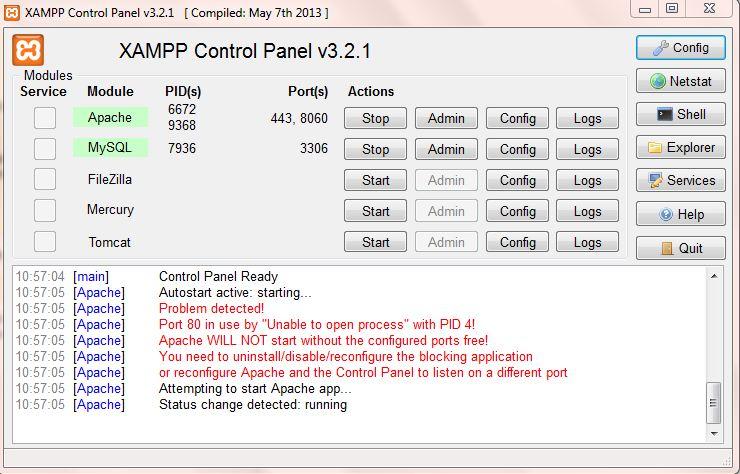
Tips for Preventing Future Apache Shutdown Issues
To ensure smooth sailing with your Apache server and prevent unexpected shutdowns in the future, consider the following strategies:
- Regular Software Updates: Always keep XAMPP and its components up to date. Updates often include bug fixes and performance improvements that can help prevent shutdown issues.
- Monitor Resource Usage: Keep an eye on your system’s resource usage. Make sure your machine has enough RAM and CPU power to handle the demands of Apache, especially if you’re running multiple applications.
- Check Configuration Files: Regularly review your Apache configuration files (like httpd.conf). Incorrect settings can lead to instability. Pay special attention to the
ListenandServerRootdirectives. - Use a Firewall Wisely: Ensure that your firewall is correctly configured to allow Apache to run without interruptions. Misconfigured firewall rules can block important ports.
- Backup Regularly: Maintain backups of your configuration files and important data. In case of failure, it allows you to restore your setup quickly without significant downtime.
In addition to these preventive measures, consider implementing a logging system to better understand your server’s behavior. By analyzing log files, you can identify patterns that lead to shutdowns:
| Error Type | Description | Possible Solution |
|---|---|---|
| Port Conflict | Another application is using the same port as Apache. | Change Apache’s listening port in httpd.conf. |
| Insufficient Memory | Apache is unable to allocate enough memory. | Upgrade hardware or optimize running services. |
| Configuration Error | Incorrect settings in configuration files. | Validate and correct the configuration syntax. |
Lastly, consider joining forums or communities focused on XAMPP and Apache. Engaging with other users can provide insights into common issues and effective solutions:
- Online Forums: Participate in discussions on platforms like Stack Overflow or dedicated PHP forums.
- Documentation: Always refer to the official XAMPP and Apache documentation for best practices and troubleshooting tips.
- Collaborative Learning: Share your experiences and learn from others who have faced similar challenges.

Getting the Most Out of XAMPP: Best Practices for Stability
To enhance your experience with XAMPP and ensure that the Apache server runs smoothly, implementing a few best practices can go a long way in preventing errors such as “Apache shutdown unexpectedly.” Here are some valuable tips to maintain stability and improve your server’s performance:
- Regularly Update XAMPP: Keeping XAMPP up to date ensures you have the latest features and security fixes. An outdated version may have bugs that could lead to unexpected shutdowns.
- Check Port Conflicts: Apache typically runs on port 80. If another application is using this port, it can cause issues. Use tools like netstat to check which ports are in use.
- Increase Memory Limits: Sometimes, Apache may shut down due to insufficient memory. Adjust the
memory_limitin yourphp.inifile to a higher value, such as512Mor1024M. - Optimize Configuration Files: Review your
httpd.confandphp.inifiles for settings that may be causing instability. For example, check theMaxClientsdirective to ensure it matches your server’s capacity.
Additionally, monitoring logs can help you troubleshoot issues effectively. The error.log located in the apache/logs directory is a treasure trove of information. Regularly checking this log provides insight into what might be causing your Apache server to crash.
Another important aspect to consider is the management of your files and databases. Ensure that your application is not attempting to access large files or databases beyond its capabilities, as this can lead to crashes. Using a tool like phpMyAdmin, you can easily manage database size and optimize queries.
| Best Practice | Description |
|---|---|
| Update Regularly | Keep XAMPP updated for security and stability. |
| Monitor Logs | Regular log checks can identify root causes of shutdowns. |
| Optimize Configurations | Custom tailoring of configuration files prevents crashes. |
| Avoid Port Conflicts | Ensure no other apps are using Apache’s default ports. |
By adopting these practices, you can significantly improve the stability of your XAMPP environment. Not only will this lead to fewer errors, but it will also provide a smoother development experience, allowing you to focus on your projects without interruptions.
Frequently Asked Questions (FAQ)
Q&A: How to Fix XAMPP Error “Apache Shutdown Unexpectedly”
Q: What does the error “Apache shutdown unexpectedly” mean?
A: Great question! This error typically means that the Apache server within XAMPP failed to start properly. It could be due to various reasons, such as port conflicts, configuration issues, or missing files. It’s a common hiccup, but don’t worry; there are straightforward ways to address it!
Q: What are the common causes of this error?
A: There are a few main culprits behind this pesky error:
- Port Conflicts: This happens when another application is using the same port as Apache. By default, Apache uses port 80 for HTTP and port 443 for HTTPS.
- Configuration Issues: Sometimes, changes made to the httpd.conf file can lead to problems.
- Missing Files or Corruption: If important files are missing or damaged, Apache can’t start.
- Anti-virus or Firewall Settings: Some anti-virus software or firewalls may mistakenly block Apache from running.
Q: How can I check for port conflicts?
A: Easy! You can use the Command Prompt on Windows. Just type netstat -a -n -o and hit Enter. Look for ports 80 and 443 in the list. If you see another application using these ports, you’ll need to either stop that application or change Apache’s listening port in the httpd.conf file.
Q: How do I change the Apache listening port?
A: Changing the port is simple! Open the httpd.conf file in the XAMPP apache/conf directory. Look for a line that says Listen 80 and change it to Listen 8080 (or any other available port). Don’t forget to adjust the port in your URL when you access your server, like http://localhost:8080.
Q: What if I suspect a configuration issue?
A: If you’ve recently changed settings in the configuration files, it’s best to revert those changes. Alternatively, you can download a fresh copy of the httpd.conf file from the XAMPP package and replace your existing one—just make sure to back up your original first!
Q: What role do anti-virus and firewall settings play in this error?
A: Sometimes, your security software might see Apache as a threat. To fix this, you can add exceptions for Apache in your anti-virus and firewall settings. It’s worth checking this if you’ve recently installed or updated your security software!
Q: What if nothing seems to work?
A: If you’ve tried all the above and you’re still facing issues, it might be time to look at the XAMPP logs. The error.log file can give you detailed insights into what’s going wrong. It’s located in xampp/apache/logs/. Reading the log can point you in the right direction!
Q: Is there a way to prevent this error in the future?
A: Absolutely! Regularly check for updates to your XAMPP installation and make sure to avoid changing default configurations unless necessary. Keeping your system and software up to date can also help minimize these issues.
Q: Any final tips for someone dealing with this error?
A: Don’t stress! This error is frustrating, but it’s fixable. Take a deep breath, follow the steps outlined, and you’ll be back up and running in no time. And remember, the XAMPP community is vast; don’t hesitate to seek help in forums or support groups!
By keeping these tips in mind, you can tackle the “Apache shutdown unexpectedly” error confidently. Happy coding!
Final Thoughts
Conclusion
And there you have it! Tackling the “Apache Shutdown Unexpectedly” error in XAMPP doesn’t have to be a headache. Whether it’s adjusting your configuration files, checking for port conflicts, or ensuring you’ve got the right permissions, these steps can help you get your local server back up and running smoothly. Remember, every tech hiccup is just a learning opportunity in disguise!
If you found this guide helpful, don’t keep it to yourself! Share it with fellow developers who might be wrestling with the same issue. And if you have any tips or experiences to share, drop a comment below—we’d love to hear from you! Happy coding, and may your XAMPP journey be as smooth as possible!





